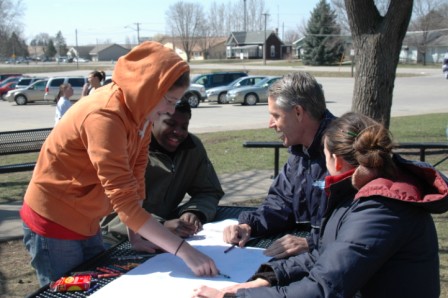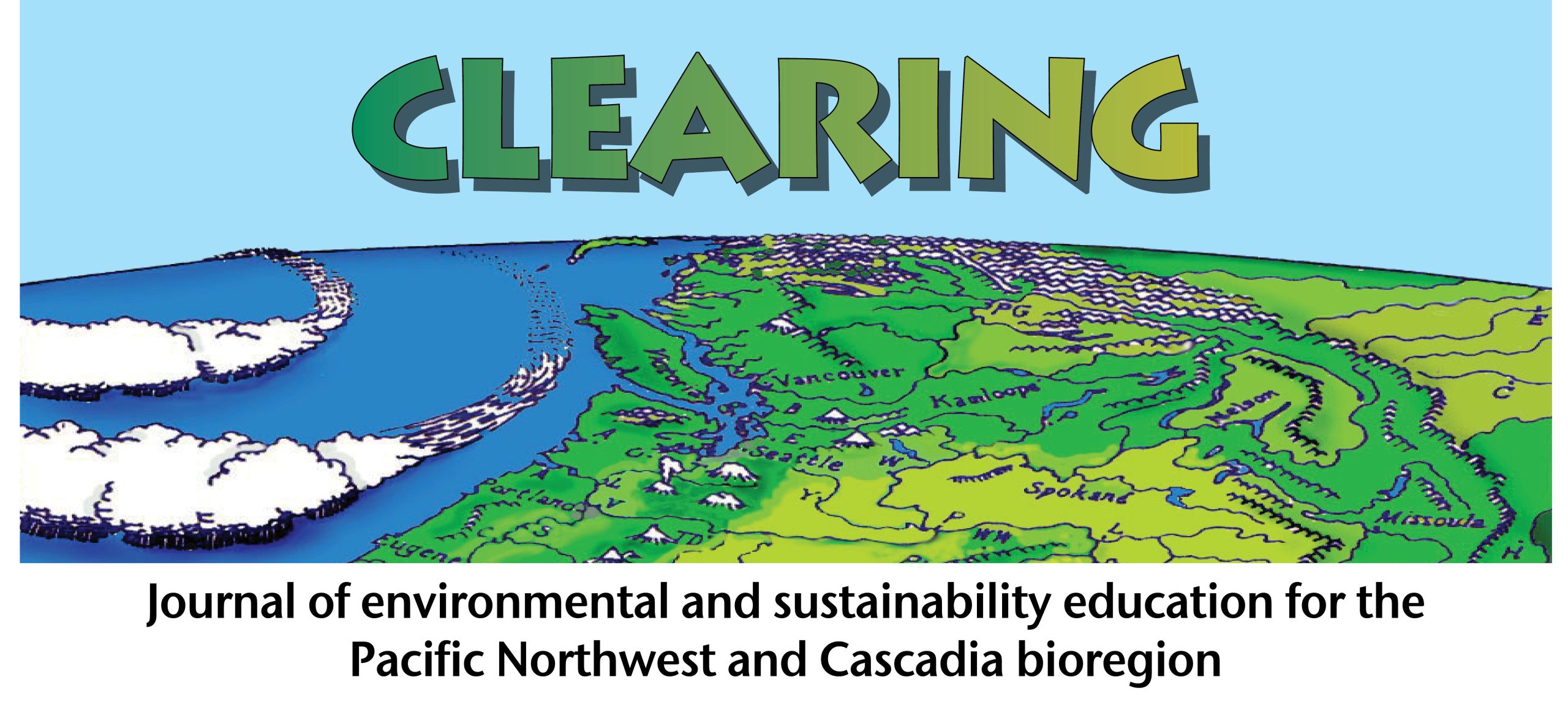

Barack Obama, scientists and campaigners have all looked at how to engage Americans more powerfully on the environment. Now researchers have come up with one critical piece of advice: do say “global warming”, don’t say “climate change”.

NOAA: Bridging art and science to protect salmon habitat
 Balancing waterfront development with the needs of salmon is a continuous challenge that requires innovative thinking. To step outside the box, the National Oceanic and Atmospheric Administration (NOAA) and the Pacific Northwest College of Arts formed a unique partnership. Art students challenged NOAA to develop new ways of communicating this complex environmental and societal issue; and NOAA provided students with the opportunity to apply their talents in a professional setting. Working together, NOAA and the students bridged art with science to create a call to action. The students produced an animated short story to communicate the importance of shorelines, looking at traditional methods for protecting them so they can be modified to support healthy salmon habitat.
Balancing waterfront development with the needs of salmon is a continuous challenge that requires innovative thinking. To step outside the box, the National Oceanic and Atmospheric Administration (NOAA) and the Pacific Northwest College of Arts formed a unique partnership. Art students challenged NOAA to develop new ways of communicating this complex environmental and societal issue; and NOAA provided students with the opportunity to apply their talents in a professional setting. Working together, NOAA and the students bridged art with science to create a call to action. The students produced an animated short story to communicate the importance of shorelines, looking at traditional methods for protecting them so they can be modified to support healthy salmon habitat.
http://www.westcoast.fisheries.noaa.gov/stories/2014/19_03032014_pnca_nearshore_habitat_video.html

Top 10 Benefits of Environmental Education

 By Susan Toth in Educator Tips & Stories, PLT Blog
By Susan Toth in Educator Tips & Stories, PLT Blog
Environmental education (EE) connects us to the world around us, teaching us about both natural and built environments. EE raises awareness of issues impacting the environment upon which we all depend, as well as actions we can take to improve and sustain it.
Whether we bring nature into the classroom, take students outside to learn, or find impromptu teachable moments on a nature walk with our families, EE has many benefits for youth, educators, schools, and communities.
As a long time supporter of environmental education and as an Adjunct Professor of EE at University of Wisconsin – Stevens Point, it is my passion to inspire future educators in this field. Over the years, I have asked each of my classes to share the reasons they teach EE, what it means to them, and how it can benefit learners of all ages. Here are our top ten benefits of EE.
Read the rest of the article here.
56 EE Activities You Can Do Today!

Nature Connection Pyramid

Coyote Teaching
by Connor O’Malley
reprinted courtesy of Alderleaf Wilderness College
http://www.wildernesscollege.com/
![]() oyote teaching is a phrase popularized by Tom Brown Jr. and Jon Young. Similar teaching methods however, have been used by indigenous people, philosophers, psychologists, and wise individuals all over the world. A “coyote teacher” is one who encourages the student to delve deeper into the mystery at hand, rather than ending the learning process by providing a quick answer.
oyote teaching is a phrase popularized by Tom Brown Jr. and Jon Young. Similar teaching methods however, have been used by indigenous people, philosophers, psychologists, and wise individuals all over the world. A “coyote teacher” is one who encourages the student to delve deeper into the mystery at hand, rather than ending the learning process by providing a quick answer.
This form of teaching is most effective with a student that you are in a mentoring relationship with. Trust between the student and the teacher is a crucial ingredient to success. This kind of teaching happens when a teacher is hyperaware of their student and knows their students’ knowledge base, personality, comfort zones, desires, current mood, family situation, upbringing, etc. Using this abundance of knowledge, the teacher can creatively challenge and inspire their student to look deeper. The more you know about the student, the more effective you will be as a coyote teacher. The most common failure I have seen (and caused) with this form of teaching happens when the teacher does not know the student well enough, or is not aware enough of how the student is doing in that moment.

One aspect of this kind of teaching, in certain situations, is withholding an answer from an eager student and forcing them to look closer. This can obviously cause problems with a student who is impatient, not in the mood, or has become accustomed to quick and easy answers. It is a balancing act to use this technique with students who are paying money for a class. They may feel that they aren’t getting their money’s worth if they don’t get all of their questions answered immediately. One of my great mentors, Dan Gardoqui (White Pine Programs) would navigate this slippery terrain with one simple line: “Do you want me to tell you the answer or do you want to look it up for yourself?” If I wanted the answer right there and then, he’d tell me – thus earning my trust. At the same time, he was challenging me to put in the hard work.
Let me paint a picture of a successful coyote teaching scenario:
A group of students are walking along the beach and they come across some tracks. Before anyone talks about the tracks the teacher asks them to take a minute and just look at them. Then the teacher asks someone to say what they see (but NOT what the animal is). One student says “I see 5 toes” another student says “I see long claws and a triangular heel pad”. Now before anyone can say the answer, the teacher has the students follow the trail. It leads them down the beach and to a dumpster where it chewed up a greasy paper bag. Then it leads to a small scat with blunt ends that is full of insect parts. Finally they lose the trail and discuss their findings. What was the animal? A skunk! Rather than tell everyone who made the tracks at the very beginning, the mystery was kept alive and the students were forced to remain engaged until the end of the trail.
You can see that by tactfully holding out on some answers, it can greatly enhance the learning experience.
So how does one learn to be a coyote teacher? In my opinion, it is very simple.
Step 1: Develop yourself. Practice your skills, do sit spots, look-up mysteries, expand your awareness, do the things that ignite that feeling of inspiration inside yourself.
Step 2: Have genuine relationships with people.
The majority of teaching is role-modeling. All of my favorite teachers were people who were always striving to improve themselves, always looking for answers to things, looking for creative solutions to problems with an open mind and then they “gave their gifts” to me just by being my friend. They reached out by inviting me over for a beer or they gave me a job; asked me to babysit their kids. To me this is true coyote teaching and what mentoring is all about.
Recommended Books
Coyote’s Guide by Young, McGown and Haas
